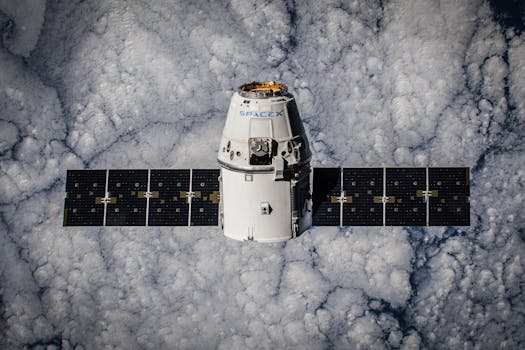The Future of Satellites: Revolutionizing Global Communication and Exploration

The Future of Satellites: Revolutionizing Global Communication and Exploration. The future of satellites holds great promise for revolutionizing global communication and exploration. With advancements in technology, satellites are becoming more efficient, cost-effective, and versatile, enabling new applications and services. One of the key drivers of this revolution is the development of smaller, more agile satellites, such as cubesats and smallsats, which are being used for a variety of purposes, including Earth observation, communication, and scientific research.
Satellite technology has come a long way since the launch of the first artificial satellite, Sputnik, in 1957. Today, there are thousands of satellites in orbit around the Earth, providing a wide range of services, including television broadcasting, navigation, weather forecasting, and communication. The future of satellites is expected to be even more exciting, with the development of new technologies, such as satellite constellations, reusable rockets, and advanced propulsion systems.
In the area of global communication, satellites are playing an increasingly important role, providing connectivity to remote and underserved areas, and enabling new services, such as satellite-based broadband internet. The development of satellite constellations, such as those being launched by companies like SpaceX and OneWeb, is expected to provide high-speed, low-latency internet connectivity to anyone, anywhere in the world. This has the potential to revolutionize the way we communicate, and to bridge the digital divide between urban and rural areas.
The use of satellites for scientific research and exploration is also expected to continue to grow, with the development of new satellite-based instruments and sensors, and the launch of new missions to explore the Earth, the Moon, and other planets. Satellites are being used to study the Earth’s climate, to monitor weather patterns, and to track the movement of glaciers and sea ice. They are also being used to explore the surface of the Moon and other planets, and to search for signs of life beyond Earth.
In addition to these applications, satellites are also being used for a variety of other purposes, including navigation, disaster response, and environmental monitoring. The development of new satellite-based technologies, such as synthetic aperture radar and hyperspectral imaging, is enabling new applications and services, such as crop monitoring, soil moisture mapping, and disaster response.
The future of satellites is not without its challenges, however. One of the main challenges facing the satellite industry is the issue of space debris, which is becoming an increasingly serious problem. Space debris, which includes old satellites, rocket parts, and other objects, can pose a significant threat to operating satellites, and can make it difficult to launch new satellites into orbit. To address this challenge, companies and governments are working to develop new technologies and strategies for removing space debris from orbit, and for preventing the creation of new debris in the first place.
Another challenge facing the satellite industry is the issue of regulatory frameworks, which can vary significantly from country to country. The development of new satellite-based technologies and services is often hindered by outdated or inconsistent regulatory frameworks, which can make it difficult for companies to launch new satellites or to provide new services. To address this challenge, governments and international organizations are working to develop new regulatory frameworks, which can provide a clear and consistent set of rules and guidelines for the satellite industry.
Despite these challenges, the future of satellites is looking bright. With the development of new technologies and applications, satellites are expected to play an increasingly important role in a wide range of fields, from global communication and exploration to scientific research and environmental monitoring. As the satellite industry continues to evolve and grow, we can expect to see new and innovative applications of satellite technology, and new opportunities for companies and governments to work together to advance the use of satellites for the benefit of humanity.
In conclusion, the future of satellites is a promising and exciting one, with the potential to revolutionize global communication and exploration. With the development of new technologies and applications, satellites are expected to play an increasingly important role in a wide range of fields, from global communication and exploration to scientific research and environmental monitoring. As the satellite industry continues to evolve and grow, we can expect to see new and innovative applications of satellite technology, and new opportunities for companies and governments to work together to advance the use of satellites for the benefit of humanity.


